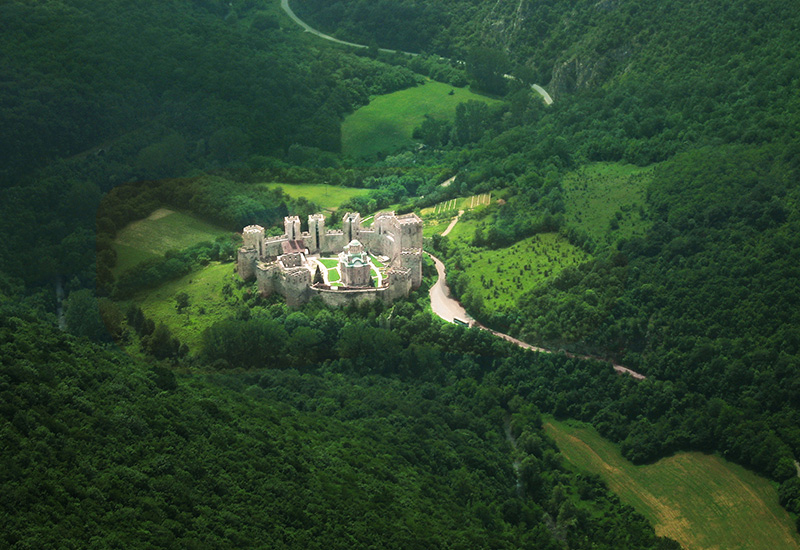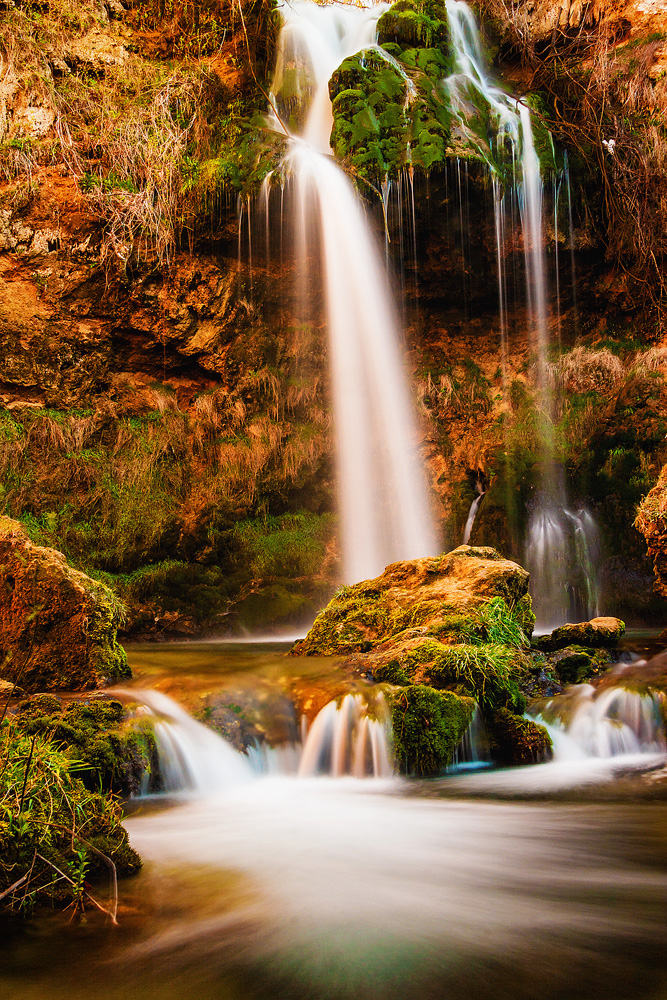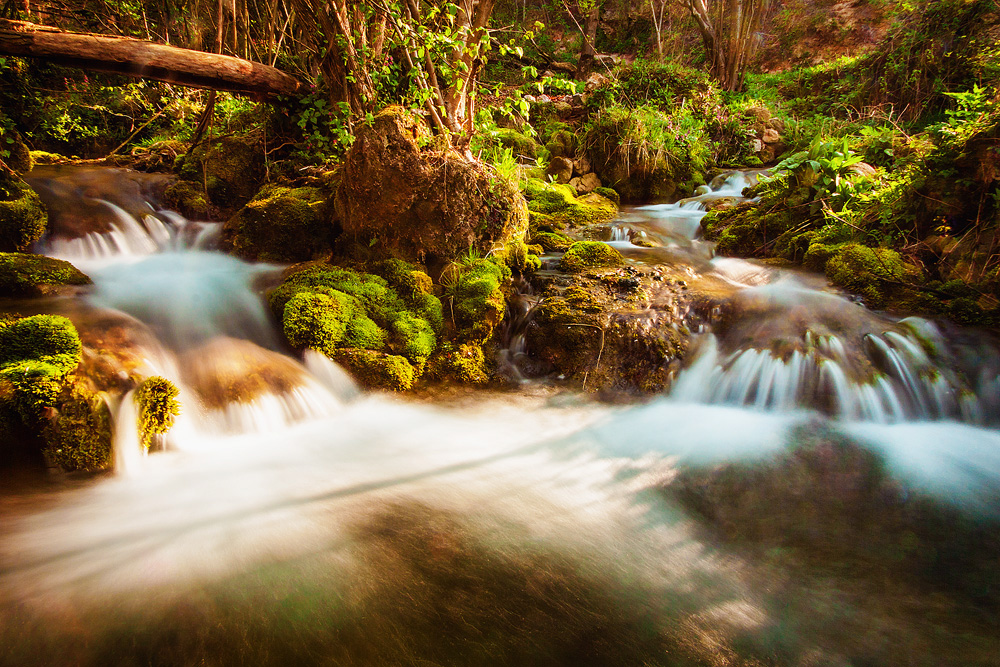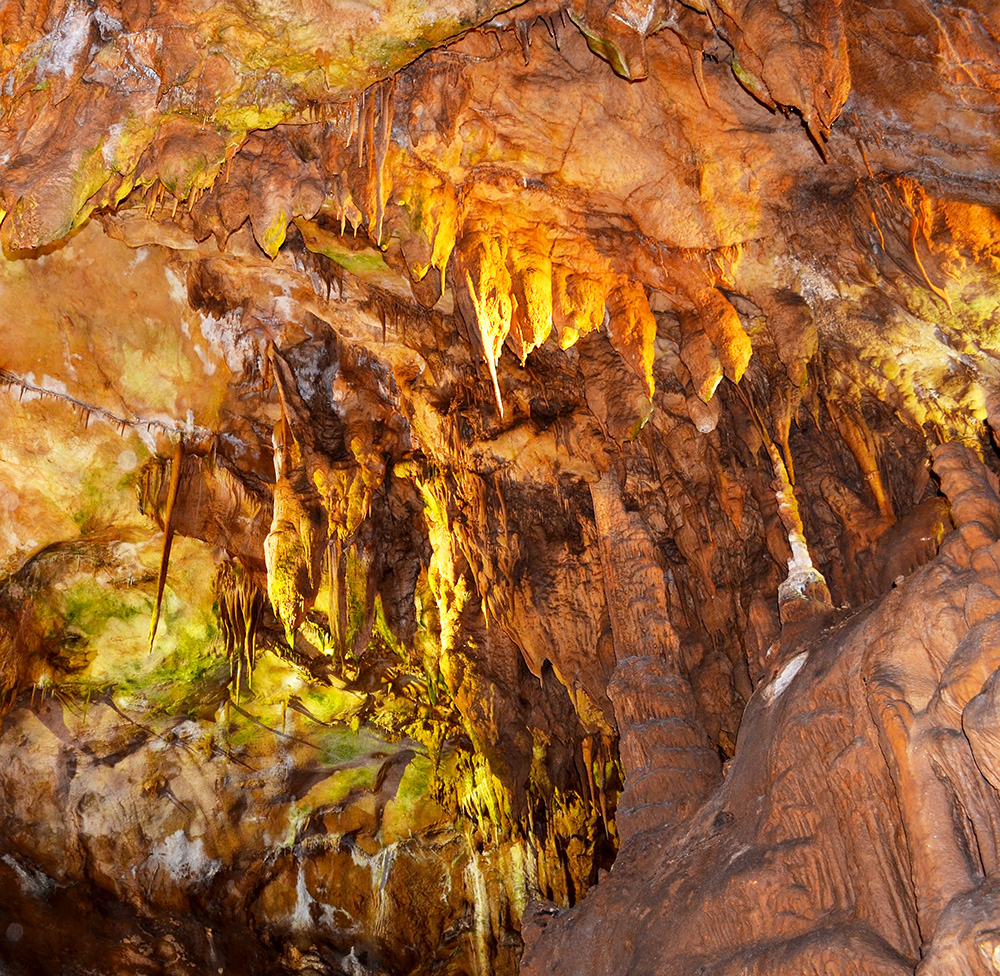
“Surrounded on all sides with high hills, the silhouette of twelve preserved towers alone leaves a strong impression; it is intensified by shimmering of six metal domes with golden crosses of the white marble church, which, against the dark background of the brown fortress rim, stands out as a shiny gemstone.”
– Felix Kanitz
-
The Resava monastery lies near Despotovac, secluded in a peaceful and quiet place, in the picturesque river Resava gorge, with Pastorak and Maćija peaks towering above it. Today it is known as Manasija. With its magnificent temple and strong fortification it has attracted attention of travel writers for centuries.
-
Despotovac was first mentioned in 1382 as the Voinci village in a deed of gift by Prince Lazar. In 1882, Milan Obrenović made a decision to name the village Despotovac in memory of Despot Stefan. Today it is the centre of Gornja Resava and together with municipality Svilajnac constitutes the Resava District.
-
Veliko Vrelo and Veliki buk
 A 20-minute drive from the monastery in the direction of the Strmosten village, at the foot of mountain Beljanica (1,300 m) are Veliko Vrelo spring and Veliki Buk waterfall, which are protected by the Serbian Government Decree as natural monument Lisine. Veliko Vrelo belongs to a very small group of powerful karst springs and is an exceptional example of a gravity spring. Veliki Buk is a unique phenomenon among accumulation tufa waterfalls in Serbia. It is the largest waterfall n Serbia, more than 20 meters high. Its beauty and impressiveness leaves one speechless. It has an unusual look because, over time, water has made a deep amphitheatre of vertical rocks in layers of tufa while his bottom is covered with big blocks of tufa. Everyone who has a bit of adventurism will be interested in going down to the bottom of the waterfall. Also, that is the only way to experience real virgin nature. Under the main stream of water is a few meters deep pond and clouds of water droplets constantly fall on visitors.
A 20-minute drive from the monastery in the direction of the Strmosten village, at the foot of mountain Beljanica (1,300 m) are Veliko Vrelo spring and Veliki Buk waterfall, which are protected by the Serbian Government Decree as natural monument Lisine. Veliko Vrelo belongs to a very small group of powerful karst springs and is an exceptional example of a gravity spring. Veliki Buk is a unique phenomenon among accumulation tufa waterfalls in Serbia. It is the largest waterfall n Serbia, more than 20 meters high. Its beauty and impressiveness leaves one speechless. It has an unusual look because, over time, water has made a deep amphitheatre of vertical rocks in layers of tufa while his bottom is covered with big blocks of tufa. Everyone who has a bit of adventurism will be interested in going down to the bottom of the waterfall. Also, that is the only way to experience real virgin nature. Under the main stream of water is a few meters deep pond and clouds of water droplets constantly fall on visitors.
-
Resava Cave
The Karst composition of mountain Beljanica causes the presence of numerous pits, sinkholes, ravines and caves. Twenty kilometres from the Manasija Monastery is the Resava Cave, often called the Resava beauty. It nests on the edge of karst field Divljikovac. Of the four and half kilometres of length, only slightly less than three kilometres have been explored, while visitors have access to only 800 meters. The oldest ornaments, made by dissolving calcium carbonate, are approximately 45 million years old. The temperature is only 7⁰C, and concentration of moisture in the air is high, from 80 to 100%. The forming of one cm3 of ornament takes one million years, and only one touch erases a hundred years of the nature’s creation. The cave has two galleries, the upper and lower one, both of which contain numerous chambers, channels, stalactites, stalagmites and petrified waterfalls. The Resava Cave, similarly to other caves of that region, was used by monks and hermits as permanent residence in the Middle Ages. On Sundays, the hermits are believed to have gathered in the monastery for solemn religious rites.

Resava Cave Galleries
Four halls can be visited in the Upper Gallery: the Hall of Joined Columns or Colonnades, Beehive Hall, which is connected by a canal with the third chamber, called the Entrance Hall of History, then the Crystal Hall and, finally, the Concert Hall. The first hall got its name after the yellowish columns that fill the space from the floor to the ceiling. The second contains three stalactites that are still forming. The second and third hall are connected by the Canyon Channel that is the driest part of the cave, so has no formations, as it contains brecciate marble. In the middle of the channel is the 25m long Blind Tunnel Swallow Hole not adapted for visitors. The third is the Entrance Hall to History, so named because tools used by prehistoric humans were found there along with skulls of the arctic fox. The only tunnel not made by water, but made artificially, is the one leading to the Crystal Hall. Before the entrance, one comes across the Path of the Flowstone Waterfalls, and the Organ –each touch of a stalactite produces a different sound. The Crystal Hall is “guarded” by the sculptures of Grandma and Grandpa, and one can see the Hung Sheep and Elephant’s Foot. A spiral staircase leads from it to the fifth hall, the Concert or Sculpture Hall. It houses the sculpture of a mother with a child, the symbol of the Resava cave. This is, in fact, a 12-metre tall stalagmite pillar. In addition, there are the Skull Tower, and the partition wall. It separates the Concert Hall from the sixth, the Boban’s Hall, named after a nine year old boy who first set foot in it. He is the son of Dr Petrović. The Coral Channel is an ornament of unique beauty that resembles the sea coral. The last is the Kepa’s or Muddy Hall , named after a speleologist and diver Kepa Radaković. It does not have many ornaments, and its walls are covered with the layers of clay. Behind it are a stalagmite and a stalactite growing towards each other called a Date in a Thousand Years or Lovers’ Longing. It is assumed that they will be joined with a “kiss” in a thousand years. The cave contains some moss and lichen as the result of reflector lights, and bats can also be found in it.
-
Surrounded by this pure nature, there are few interesting restaurants. Among them – “Resavski uranak”, restaurant and lodging house with top service personnel, and “Vodopad Lisine”, spacious estate with bungalows, small zoo, fish pond and lake for fishing activities.
